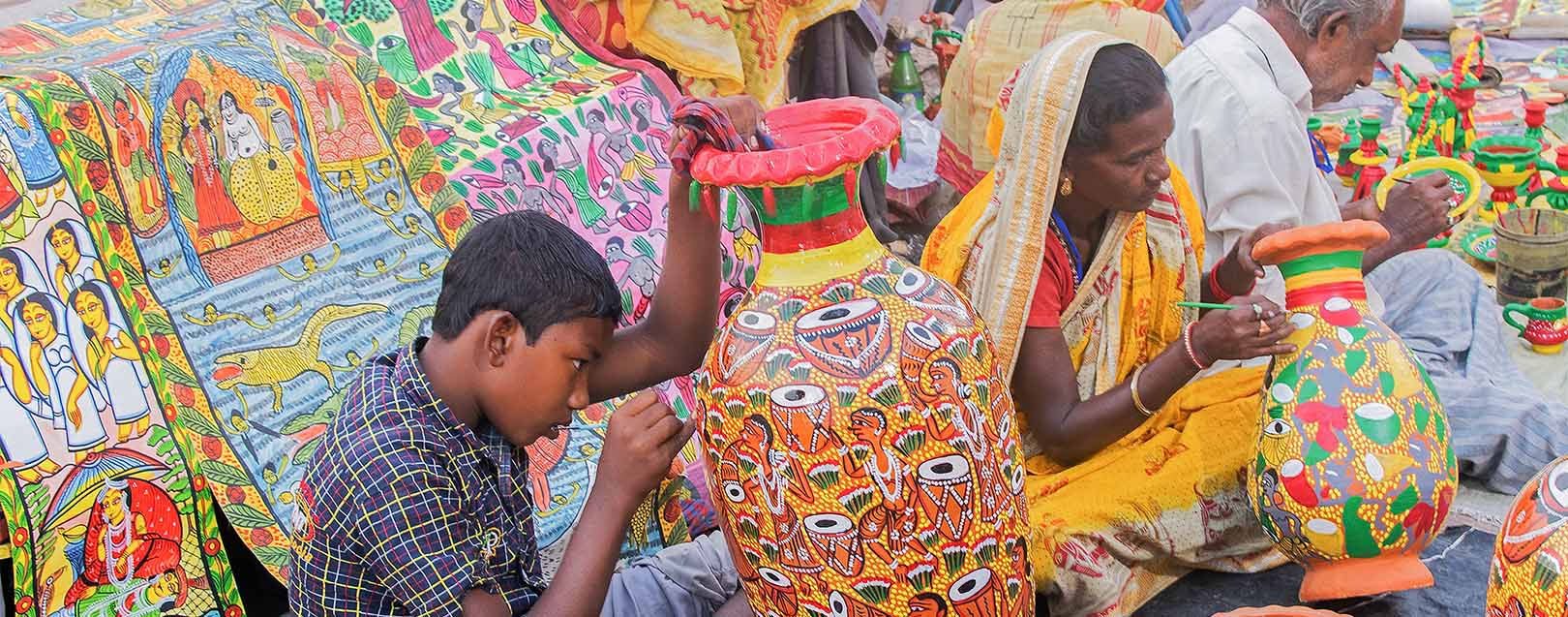
While export incentives have been increased on 63 handicraft items, the government has added 30 new handicraft product lines to the MEIS schedule. But are these measures really enough to boost exports of handicrafts from India?
Was there really a need to amend the MEIS reward rates so soon, especially when they had been arrived at after brainstorming for almost a year !
Manish K. Pandey | The Dollar Business
A few days ago, on July 14, 2015, Directorate General of Foreign Trade (DGFT) came up with a public notice and made additions and amendments in Table 1 (containing list of group country) and Table 2 (containing ITC (HS) code wise list of products with reward rates) of Appendix 3B i.e. schedule of country groups and products eligible for reward under Merchandise Exports from India Scheme (MEIS). While just four countries – Iceland, Liechtenstein, Norway and Switzerland – were shifted from Group C to Group A, exporters of hundreds of products saw their fate changing when it came to rewards under the scheme.
While 30 new products were added to the MEIS Schedule, 42 product lines were removed from the list. In addition, MEIS rates of 211 products were amended. That’s certainly a big rejig considering that the scheme was introduced just 105 days back when the new Foreign Trade Policy 2015-2020 was unveiled on April 1, 2015. What’s more interesting (or rather puzzling!) though is that DGFT came with another public notice within 24 hours (on July 15, 2015) and made changes to the one issued before. Surprisingly, they went on to amend reward rates of about 112 product lines! Why? There was a mistake in the first notice: * had been replaced with # and # with 0. To understand this better let’s consider a product say, Dhoti that falls under ITC (HS) Code 52081110. While the first public notice said that the MEIS reward for Dhoti has been revised to 2%, #, 0 from 2, *, 0 for Country Groups A, B and C, respectively, the second notice further revised it to 2%, * and # respectively [* means the product will get MEIS reward @2% for exports to Japan, whereas # means the product will get MEIS reward @2% for exports to Bangladesh and Sri Lanka].
Mistake certainly is an issue, but what the bigger issue is that by inserting such * and # tags in the MEIS Schedule and incentivising exports of a particular product to a specific country, isn’t the government once again complicating the incentive structure? Doesn’t this remind us of Market Linked Focus Product Scheme (MLFPS)? The real purpose behind combining and simplifying erstwhile Chapter 3 schemes, which offered unique duty credit scrips with varying conditions, into MEIS in the new FTP 2015-2020 was to address complex procedures, bring in uniformity in the incentive structure and boost India’s merchandise exports. But don’t you think giving more incentive to export a particular product to a select country defeating that entire purpose?
Further, was there really a need to amend MEIS rates so soon, especially when they had been arrived at after brainstorming for almost a year [Remember, new FTP was delayed by almost a year]?! And what about exporters of those 42 product lines that have been removed from the list? Won’t they cry foul?
In fact, there is still a lot that needs to be reconsidered when it comes to the new MEIS. There are lot of disparities between the old schemes and the new MEIS, which The Dollar Business had pointed out in the cover story titled “Foreign Trade Policy 2015-2020: So new? So few?” featured in the April 2015 issue of the magazine. For instance, the new scheme excluded several agriculture and forest products that were earlier eligible for duty credit scrips under VKGUY [Mushroom Spawn (HS Code: 06029020), Orchids (HS Code: 06031300), Hazelnuts (HS Code: 08021200) to name a few]. Then there were several conditions/clauses in MEIS that seem to be contentious or might lead to situations where the government funds could be grossly misused. For instance, while para 3.06 of FTP clearly stated that export of milk and milk products was an ineligible category under MEIS, but products like butter and melted butter (HS Codes: 04051000, 04059020) and malted milk (HS Code: 19011010) found a place in MEIS Schedule. These issues remain till date. So, why not focus on addressing such issues rather than playing with reward rates, the impact of which can’t be measured or determined in a short span of 105 days!
There may be larger foreign policy reasons why certain names are ‘included’ or ‘not included’ in MEIS, but then the government should also ensure that the very purpose of the scheme is served – augmenting India’s exports. And that can only happen if the government avoids making frequent changes to the scheme and focusses on addressing the real issues.
Changing… just for change’s sake, should change!
August 01, 2015 | 3:48 pm IST
Get the latest resources, news and more...
By clicking "sign up" you agree to receive emails from The Dollar Business and accept our web terms of use and privacy and cookie policy.
Copyright @2025 The Dollar Business. All rights reserved.
Your Cookie Controls: This site uses cookies to improve user experience, and may offer tailored advertising and enable social media sharing. Wherever needed by applicable law, we will obtain your consent before we place any cookies on your device that are not strictly necessary for the functioning of our website. By clicking "Accept All Cookies", you agree to our use of cookies and acknowledge that you have read this website's updated Terms & Conditions, Disclaimer, Privacy and other policies, and agree to all of them.

